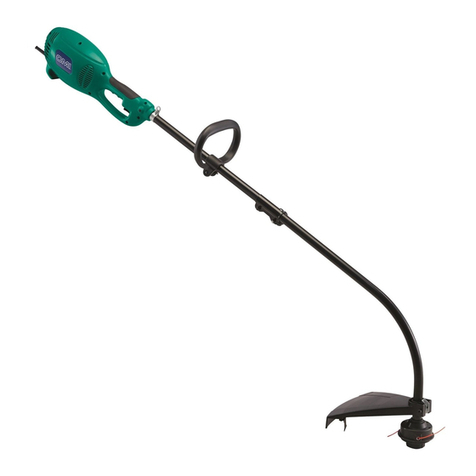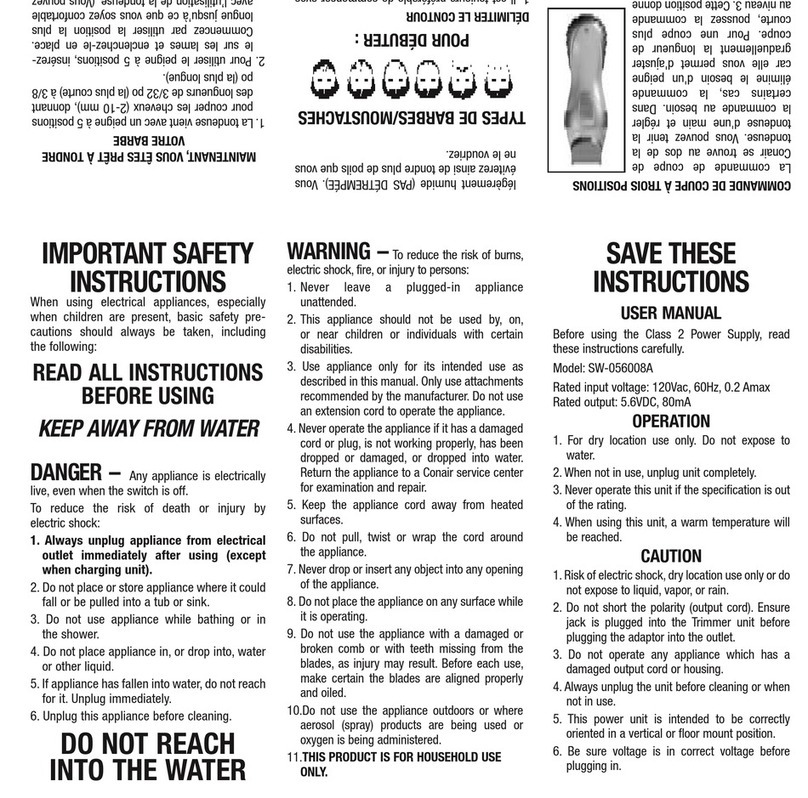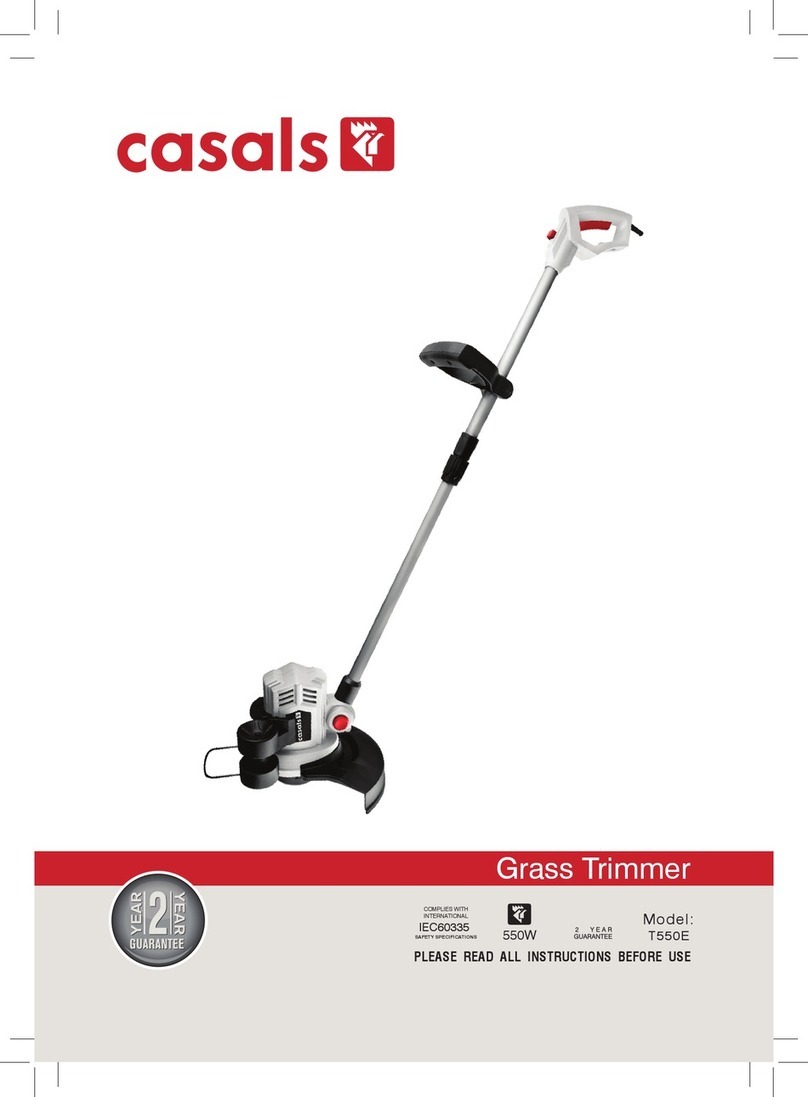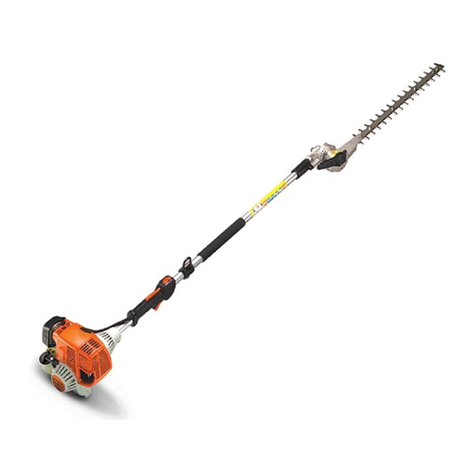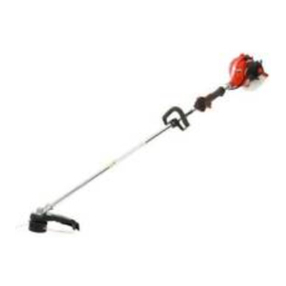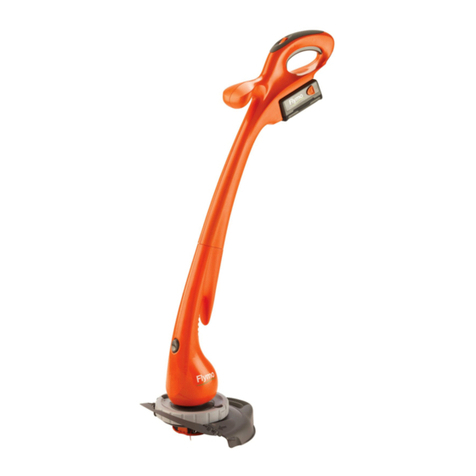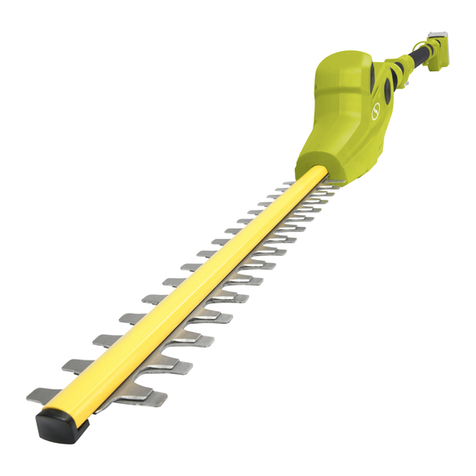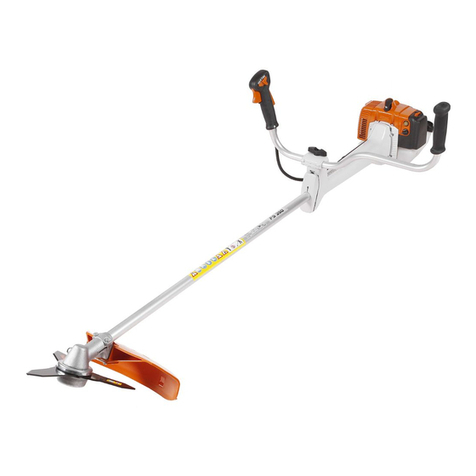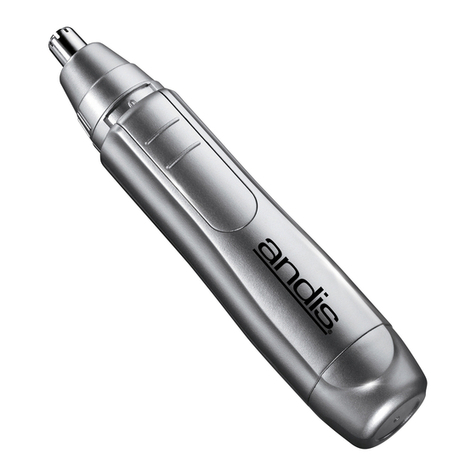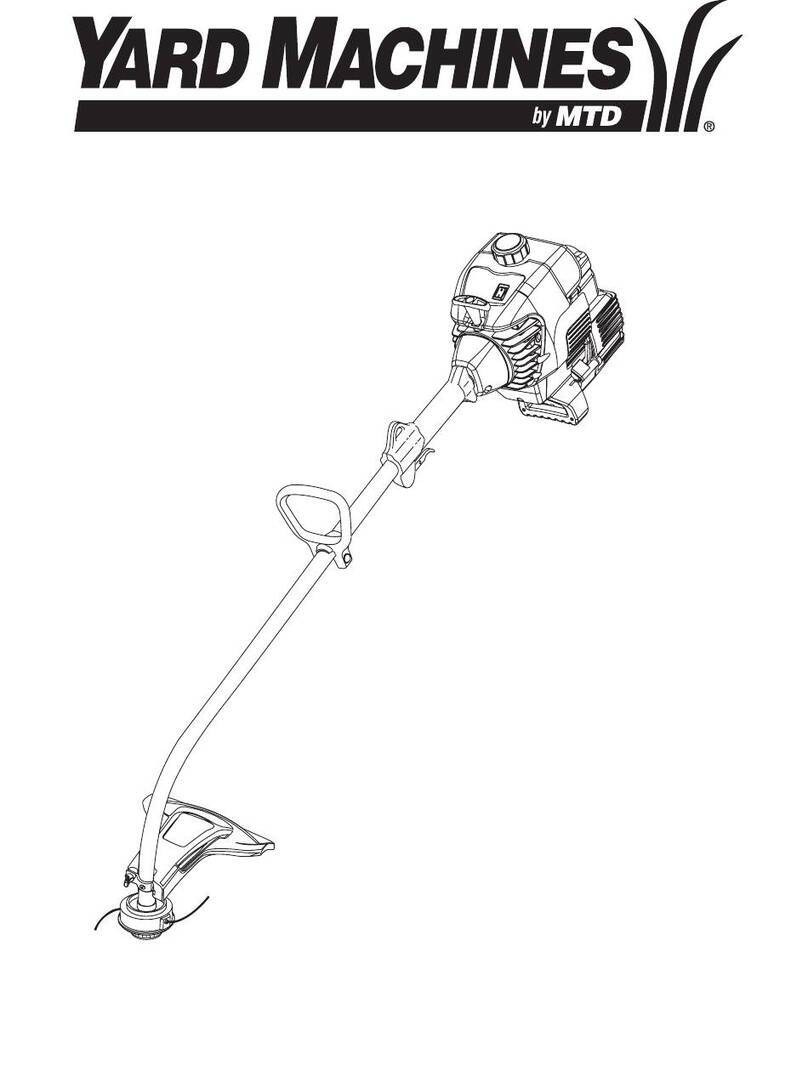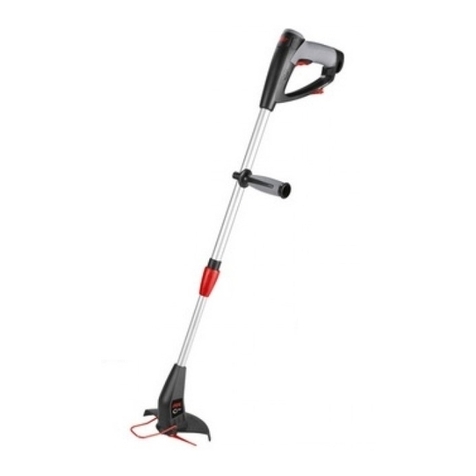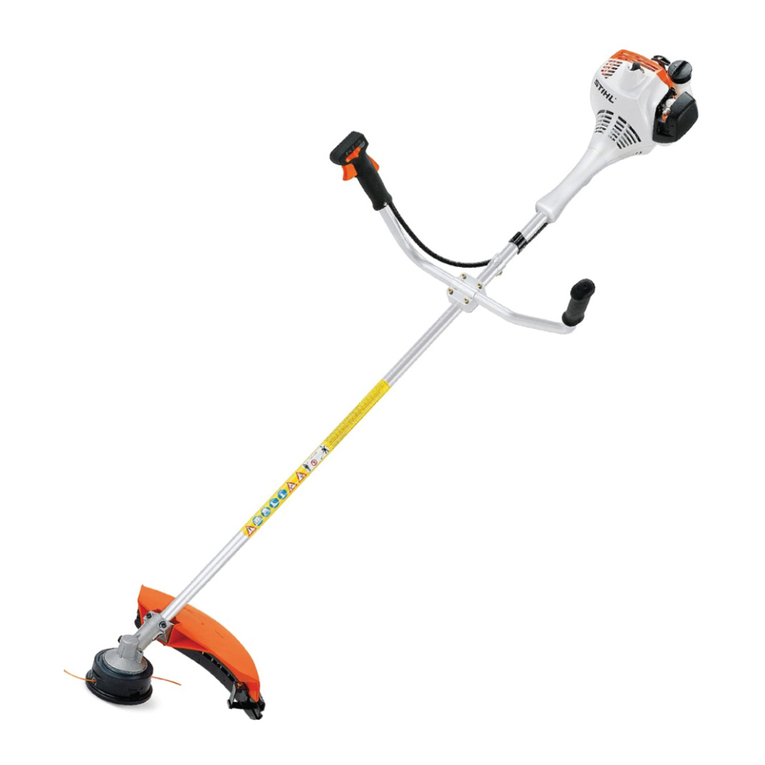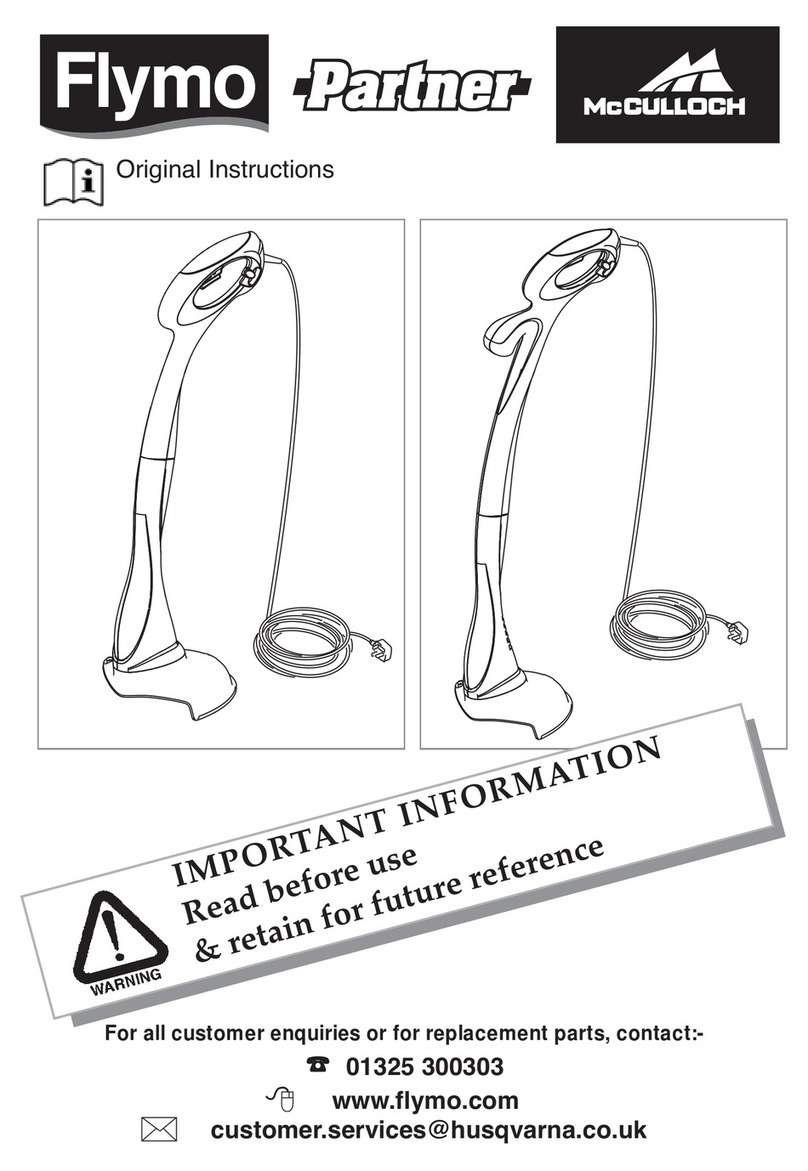PROCONCEPT PLG025 User manual

SAVE THIS MANUAL
You will need this manual for safety instructions, operating procedures, and warranty.
Put it and the original sales invoice in a safe, dry place for future reference.
CONSERVEZ CE GUIDE
Vous aurez besoin de ce guide pour les instructions de sécurité, les procédures d’utilisation et la garantie.
Conservez-le dans un endroit sûr et sec pour référence future.
QUESTIONS? 1 (888) 267-7713
Mon - Fri 7:30 am - 4:30 pm
Canada and United States (except holidays)
Our Customer Service staff are ready to provide assistance. If a part is
damaged or missing, most replacement parts ship from our facility in
two business days.
For immediate help with assembly, or for additional product information,
call our toll-free number: 1 (888) 267-7713.C
Lun - Ven 07h30 à 16h30
Canada et États Unis (sauf les jours fériés)
Notre personnel du Service à la Clientèle seront prêt à fournir
assistance. Si une pièce est endommagée ou manquante, la plupart des
remplacements seront expédiés de notre usine en deux jours ouvrables.
Pour de l’aide immédiate avec l’assemblage, ou pour des informations
additionnelles sur le produit, appeller notre numéro sans frais:
1 (888) 267-7713.C
v.080226
Model / Modèle:
25 cc Gas Trimmer
Operator’s Manual (p.2)
Coupe herbe à essence 25 cc
Manuel de l’utilisateur (p.15)
PLG025

2 PLG025b
ENGLISH
IMPORTANT SAFETY INSTRUCTIONS
DESCRIPTION OF SYMBOLS
Throughout this Operators Manual and the product itself, you will nd safety
alerts and helpful, informational messages preceded by symbols or key words.
The following is an explanation of these symbols and key words and what they
represent.
This symbol accompanied by the word WARNING calls attention to an act or
condition that can lead to serious personal injury to the operator or bystanders.
This symbol accompanied by the word IMPORTANT provides information
necessary for protection of the unit or the operator.
This symbol informs the operator to read the Instruction Manual before operating
this unit.
This symbol reminds the operator to use eye, ear and head protection when
operating power equipment.
Hot surface.
Choke control “Cold Start” position (Choke Closed).
Choke control “Warm Start” position (Choke Open).
Product certied to United States Environmental Protection Agency regulations
!
!
To use this tool properly, you must observe the safety regulations, the assembly
instructions and the operating instructions to be found in this Manual. All persons
who use and service the machine have to be acquainted with this Manual and must
be informed about its potential hazards. Children should be supervised at all times
if they are in the area in which the tool is being used. It is also imperative that you
observe the accident prevention regulations in force in your area. The same applies
for general rules of occupational health and safety.
WARNING: When using gasoline powered equipment, basic safety precautions,
including the following, should always be followed to reduce the risk of serious
personal injury and/or damage to the unit. Read all these warnings and
instructions before operating this product. Save this Instruction Manual for future
reference.
USE THE CORRECT EQUIPMENT FOR THE JOB. Never use this unit for a
purpose for which it was not intended.
DRESS CORRECTLY. Wear close tting, tough work clothing that will provide
protection, such as long slack or trousers, safety work shoes and gloves. If you
have long hair, wear a protective hair covering.
1.
2.
!

v.080226 3
ENGLISH
WEAR PROPER SAFETY EQUIPMENT. Heavy duty work gloves, hard hat, a
safety face shield, or safety glasses for eye protection and a good grade of ear
plugs or other sound barriers for hearing protection should be worn at all times
when operating this unit.
STORE IN A SAFE PLACE. Open fuel cap slowly to release any pressure which
may have formed in fuel tank. To prevent a re hazard, move at least 10 feet (3
meters) from fueling area before starting.
NEVER START OR RUN THE MACHINE INSIDE A CLOSED ROOM OR
BUILDING. Fumes from the exhaust contain dangerous carbon monoxide.
KEEP CHILDREN, BYSTANDERS, AND ANIMALS 50 FEET (15 METERS)
AWAY. If approached stop unit immediately. Operation of power equipment
should always be restricted to mature and properly instructed individuals.
KEEP ALL PARTS OF YOUR BODY AWAY FROM ANY MOVING PARTS.
DO NOT OPERATE UNIT IN AWKWARD POSITIONS. Keep your footing
secure and balanced at all times. Do not over reach.
STAY ALERT. WATCH WHAT YOU ARE DOING. USE COMMON SENSE. Do
not operate power equipment when you are tired or under the inuence of drugs
or alcohol.
ALWAYS BE AWARE OF YOUR SURROUNDINGS. Stay alert for possible
hazards that you may not hear due to the noise of this unit.
CLEAR THE WORK AREA BEFORE EACH USE. Remove all objects such
as rocks, broken glass, nails, wire, or string which can be thrown or become
entangled in the cutting line or blade.
KEEP ALL SCREWS AND FASTENERS TIGHT. Never operate equipment
when it is improperly adjusted or not completely and securely assembled.
CHECK FOR DAMAGED PARTS. Before further use of the unit, a guard or
other part that is damaged should be carefully checked to determine if it will
operate properly and perform its intended function. Check for alignment of
moving parts, free running of moving parts, breakage of parts, proper mounting
and any other conditions that may affect the operation of the tool. A guard
or other part that is damaged should be properly repaired or replaced by an
authorized service facility, unless otherwise indicated in this Instruction Manual.
DEFECTIVE SWITCHES MUST BE REPLACED BY AN AUTHORIZED
SERVICE FACILITY. Do not use power equipment if the switch does not turn
the tool on and off correctly.
USE ONLY APPROVED PARTS. When servicing, use only identical
replacement parts. Use an authorized service facility to t replacement parts.
STORE EQUIPMENT AWAY FROM POSSIBLE FLAMMABLE MATERIALS,
such as gas-powered water heaters, clothes dryers, or oil-red furnaces,
portable heaters, etc.
WARNING: It has been reported that vibrations from hand-held tools may
contribute to a condition called Raynaud’s Syndrome in certain individuals.
Symptoms may include tingling, numbness and blanching of the ngers, usually
apparent upon exposure to cold. Hereditary factors, exposure to cold and
dampness, diet, smoking and work practices are all thought to contribute to the
development of these symptoms. It is presently unknown what, if any, vibrations
or extent of exposure may contribute to the condition. There are measures that
can be taken by the operator to possibly reduce the effects of vibration:
Keep your body warm, especially the head, neck, feet, ankles, hands and wrists.
Maintain good blood circulation by performing vigorous arm exercises during
frequent work breaks and also by not smoking.
Limit the hours of operation. Try to ll each day with jobs where operating the
brush cutter or other hand-held power equipment is not required.
Wear gloves. Gloves help reduce the transmission of machine vibration to your
hands.
3.
4.
5.
6.
7.
8.
9.
10.
11.
12.
13.
14.
15.
16.
IMPORTANT SAFETY INSTRUCTIONS
!

4 PLG025b
ENGLISH
IMPORTANT: If you experience discomfort, redness and swelling of the ngers
followed by whitening and loss of feeling, consult your physician before further
exposing yourself to vibration and cold. !
IMPORTANT SAFETY INSTRUCTIONS
ADDITIONAL SAFETY RULES FOR GAS TRIMMERS
DO NOT USE ANY OTHER FUEL than that recommended in your manual.
Always follow instructions in the Fuel and Lubrications section of this manual.
Never use gasoline unless it is properly mixed with 2-cycle engine lubricant.
Permanent damage to engine will result, voiding manufacture’s warranty.
DO NOT SMOKE while refueling or operating equipment.
DO NOT OPERATE UNIT WITHOUT A MUFFLER and properly installed mufer
shield.
DO NOT TOUCH or let your hands or body come in contact with the mufer.
Hold unit with thumbs and ngers encircling the handles.
DO NOT OPERATE UNIT IN AWKWARD POSITIONS; off balance, outstretched
arms, or one-handed. Always use two hands when operating unit with thumbs
and ngers encircling handles.
DO NOT RAISE LINE HEAD above ground level while unit is operating. Injury to
operator could result.
DO NOT USE UNIT FOR ANY PURPOSE OTHER than trimming lawn or
garden areas.
DON’T OPERATE UNIT FOR PROLONGED PERIODS. Rest periodically.
DON’T OPERATE UNIT UNLESS DEBRIS SHIELD IS INSTALLED AND IN
GOOD CONDITION.
DON’T ADD, REMOVE OR ALTER ANY COMPONENTS OF THIS PRODUCT.
Doing so could cause personal injury and/or damage the unit, voiding the
manufacturer’s warranty.
DON’T OPERATE YOUR UNIT NEAR OR AROUND FLAMMABLE LIQUIDS
OR GASES whether in or out of doors. An explosion and/or re may result.
TURN UNIT OFF BEFORE SETTING IT DOWN.
KEEP HANDLES DRY, CLEAN AND FREE OF FUEL MIXTURE.
KEEP LINEHEAD AS CLOSE TO GROUND AS PRACTICAL. Avoid hitting
small objects with linehead. When cutting on a slope, stand below linehead.
NEVER cut or trim on a hill or slope, etc if there is the slightest chance of
slipping, sliding or losing rm footing.
CHECK AREA YOU WILL BE TRIMMING FOR DEBRIS THAT MAY BE
STRUCK OR THROWN DURING OPERATION.
KEEP ALL PARTS OF YOUR BODY AND CLOTHING AWAY FROM LINE
HEAD when starting or running engine. Before starting engine, make sure
linehead will not come in contact with any obstacle.
STOP ENGINE BEFORE EXAMINING TRIMMING LINE.
ALWAYS KEEP THE DEBRIS SHIELD, LINEHEAD, AND ENGINE FREE OF
DEBRIS BUILD-UP.
SPECIFICATIONS
Engine: Air-cooled, 2-cycle gas
Displacement: 25 cc (1-1/2 cu.in.)
Fuel capacity: 800 ml (27 US .oz.)
Trimmer head: Twin line bump
Drive shaft length: 120 cm (47-1/4”)
Cutting width: 430 mm (17”)

v.080226 5
ENGLISH
SPECIFICATIONS
FUNCTIONAL DESCRIPTION
2
3
5
6
7
8
9
10
11
13
1
1. Line Head
2. Drive Shaft
3. Front Handle
4. Ignition switch
5. Safety trigger
6. Starter rope
7. Air lter
8. Choke lever
9. Primer bulb
10. Fuel tank
11. Throttle trigger
12. Debris shield
13. Trimmer line
4
12
Carburetor: Diaphragm type with purge pump
Ignition: Electronic
Weight: 6.3 kg (14 lb.)

6 PLG025b
ENGLISH
UNPACKING
WARNING: If any parts are missing, do not operate this tool until the missing
parts are replaced. Failure to do so could result in serious personal injury.
Carefully remove the product from the carton.
Inspect the product to make sure no breakage or damage occurred during
shipping.
Do not discard the packing material until you have inspected and operated the
product.
The Pro-Concept PLG025 Gas Trimmer is supplied with the following accessories:
Trimmer assembly
Front handle assembly
Grass guard assembly
String head
ASSEMBLY
Attaching the Front Handle (Fig. 1)
Remove the front handle, bolt, at washer, lock washer and wing nut from box.
Attach the front handle onto the shaft and snap into place. Locate the front
handle to a comfortable position.
Slide the bolt through the front handle.
NOTE: The hex bolt head ts inside the hex recess molded into one side of the
handle.
Install the at washer, lock washer, and wing nut.
Tighten wing nut securely.
Debris shield (Fig. 2)
The debris shield must be installed to properly dispense trimming line and protect
the operator.
NOTE: Shield ts snuggly onto the shaft. Some effort may be required to attach it
correctly.
Seat shield onto shaft bracket.
Insert bolt through hole. Bolt head should t into the hex shape in shield.
Insert washer and nut. Tighten securely.
FUEL
Gas Trimmer Fuel Mixture
WARNING: Never use straight gasoline in your unit. This will cause permanent
engine damage and void the manufacture’s warranty for that product. Use regular
grade unleaded gasoline mixed with 2-cycle engine oil in 40:1 ratio for best
results. Never use a fuel mixture that has been stored for over 60 days.
GASOLINE - The lowest recommended octane rating is 90. If you run the engine
on gasoline with a lower octane rating than 90 so-called “knocking” can occur.
This leads to an increased engine temperature which can result in serious engine
breakdown.
1.
2.
3.
4.
5.
1.
2.
3.
!
!
OPERATING INSTRUCTIONS
Fig. 1
Fig. 2
Debris shield
Shaft bracket

v.080226 7
ENGLISH
TWO-STROKE OIL - For the best results use premium grade two-stroke oil mixed at
a 40:1 ratio, intended for air cooled engines. Do not use any 2-cycle oil product with
a recommended mixing ratio of 100:1. If needed, contact your dealer when selecting
oil.
REMEMBER: Mixing ratio: 40 : 1
WARNING: Never use two-stroke oil intended for water cooled outboard engines
or four-stroke engines.
Mixing Fuel
WARNING: Fuel is VERY ammable. Use extreme caution when mixing, storing
or handling fuel or serious personal injury could result.
WARNING: Always mix and store the fuel in a properly marked container that is
approved by local codes and ordinances for such usage. Do not mix fuel in an
enclosed room or near open ames. Assure adequate ventilation.
Start by lling half the quantity of gasoline required into a clean approved petrol
container.
Add the entire oil quantity.
Close container and Mix (shake) the fuel mixture.
Add the remaining quantity of gasoline.
Remix (shake) the fuel mixture carefully before lling the units’ fuel tank.
Replace fuel container cap and wipe any spilled fuel from the container and
surrounding area.
Filling Tank
Clean surface around fuel cap to prevent contamination.
Loosen fuel cap slowly. Rest the cap on a clean surface.
Carefully pour fuel into the tank. Avoid spillage.
Prior to replacing the fuel cap, clean and inspect the gasket.
Immediately replace fuel cap and hand tighten. Wipe up any fuel spillage
NOTE: It is normal for smoke to be emitted from a new engine after rst use.
WARNING: Always shut off engine before fueling. Never add fuel to a machine
with a running or hot engine. Move at least 9 m (30 ft.) from refueling site before
starting engine. Do not smoke!
1.
2.
3.
4.
5.
6.
1.
2.
3.
4.
5.
!
!
!
!
STARTING A COLD ENGINE (Fig. 3 & 4)
IMPORTANT: To minimize load on engine during starting and warm-up, trim
excess trimming line to 13 cm. (5”)
Place trimmer on rm at surface.
Move ignition switch to the “RUN “.
Your unit is designed with a 2 position choke; CLOSED and OPEN. Move choke
lever to CLOSED position.
Prime the carburetor. Pump the primer bulb 3-4 times.
Grip the handle rmly and fully depress safety trigger & throttle trigger.
Pull starter rope out a short way until resistance is felt (approximately 100 mm or
4”). A smooth rapid pull is required for a strong spark.
Pull starter rope briskly 4 times.
Once engine starts, allow it to run for 10 seconds.
Move the choke to OPEN position.
1.
2.
3.
4.
5.
6.
7.
8.
9.
!
OPERATING INSTRUCTIONS
Fig. 3
Ignition switch
Safety trigger
Throttle
trigger

8 PLG025b
ENGLISH
IMPORTANT: If engine fails to start after repeated attempts, refer to
troubleshooting section.
WARNING: Always pull starter rope straight out. Pulling starter at an angle will
cause rope to rub against the eyelet. This friction will cause the rope to fray and
wear more quickly. Always hold starter handle when rope retracts. Never allow
rope to snap back from extended position. This could cause rope to snag or fray
and also damage the starter assembly.
WARM ENGINE START (Fig. 3 & 4)
Place trimmer on rm at surface
Move ignition switch to the “RUN” position.
Grip the handle rmly, squeeze throttle trigger to FULL THROTTLE position.
Pull starter rope briskly until engine starts, but no more than 6 times.
If engine does not start, please follow above instructions ”Starting a Cold
Engine”.
TO STOP ENGINE
Release throttle trigger.
Let engine return to idle.
Push and hold ignition stop switch until engine stops.
1.
2.
3.
4.
5.
1.
2.
3.
!
TRIMMING INSTRUCTIONS
ADDITIONAL SAFETY PRECAUTIONS
IMPORTANT: Before operating your unit, review ALL SAFETY PRECAUTIONS in
this manual.
IF UNFAMILIAR WITH TRIMMING techniques, practice the procedures with
ENGINE in “OFF” position.
ALWAYS CLEAR WORK area of debris such as cans, bottles, rocks, etc.
Striking objects can cause serious injury to operator or bystanders and also
damage equipment. If an object is accidentally hit, immediately TURN ENGINE
OFF and examine equipment.
NEVER OPERATE UNIT WITH DAMAGED OR DEFECTIVE EQUIPMENT.
ALWAYS TRIM OR CUT AT HIGH ENGINE SPEEDS. Do not run engine slowly
at the start or during trimming operations.
DO NOT use equipment for purposes other than trimming or removing weeds.
NEVER raise linehead above knee height during operation.
DO NOT operate unit with other people or animals in the immediate vicinity.
Allow a minimum of 15 m (50 ft) between operator and other people and animals
when trimming or mowing. Allow a distance of 30 m (100 ft) between operator
and other people and animals when SCALPING with linehead trimmer.
IF OPERATING UNIT ON A SLOPE, stand below the cutting attachment. Don’t
operate on a slope if there is the slightest chance of slipping or losing your
footing.
LINEHEAD LINE RELEASE (Fig. 5 & 6)
WARNING: Do not use steel wire or plastic coated steel wire of any kind with your
linehead trimmer. Serious injury to the operator may result.
To release fresh line, run engine at full throttle and “bump” linehead against lawn.
Line will automatically release. The knife in the debris shield will trim excess line
(Fig. 5).
!
OPERATING INSTRUCTIONS
Fig. 4
Starter rope
Choke lever
Primer
bulb
Fig. 5
“BUMP”
!
!

v.080226 9
ENGLISH
Periodically remove weed wrap to prevent overheating the drive shaft. Weed wrap
occurs when strands of weed become entangled around the shaft beneath the
debris shield (Fig. 6). This condition prevents the shaft from being properly cooled.
Remove weed wrap with screwdriver or similar device.
TRIMMING PROCEDURES
When properly equipped with a debris shield and linehead, your unit will trim
unsightly weeds and tall grass in those hard-to-reach areas-along fences, walls,
foundations and around trees.
It can also be used for scalping to remove vegetation down to the ground for easier
preparation of a garden or to clean out a particular area.
NOTE: Even with care, trimming around foundations, brick or stone walls, curbs,
etc., will result in above-normal line wear.
Trimming / Mowing
Swing trimmer with a sickle-like motion from side to side. Don’t tilt the linehead
during the procedure. Test area to be trimmed for proper cutting height. Keep
linehead at same level for even depth of cut.
Close trimming
Position the trimmer straight ahead with a slight tilt so that the bottom of the
linehead is above ground level and the line contact occurs at the desired cutting
point. Always cut away from operator. Don’t pull trimmer in toward operator.
Fence/Foundation trimming
Approach trimming around chain link fences, picket fences, rock walls and
foundations slowly, to avoid whipping the line against such obstacles. If the line
comes in contact with rock, brick walls, or foundations, it may break or fray. If the
line snags fencing, it will snap off.
Trimming around trees
Trim around tree trunks with a slow approach so the line does not contact bark.
Walk around the tree trimming from left to right. Approach grass or weeds with the
tip of the line and tilt the linehead slightly forward.
SCALPING
WARNING: Use extreme caution when scalping. Keep a distance of
30 m (100 ft) between operator, other people and animals during operation.
Scalping refers to removal of all vegetation down to the ground. To do this, tilt the
linehead to about a 30 degree angle to the left. By adjusting the handle you will
have better control during this operation. Don’t attempt this procedure if there is
any chance ying debris could injure the operator, other people or cause damage
to property.
!
OPERATING INSTRUCTIONS
Fig. 6

10 PLG025b
ENGLISH
MAINTENANCE
REPLACING TRIMMING LINE-STANDARD HEAD
Turn knob (A) COUNTERCLOCKWISE and remove (Fig. 7A). Use knob spanner
supplied.
Remove spool (B) and spring (C) from spindle (D).
Remove any remaining trimming line (H).
Double a 4.3 m (14’) length of 2 mm (0.80’’) trimming line. Place the looped
center in one of the slots of the spool divider (Fig. 7D).
Wind trimming line clockwise as shown in illustration (Fig. 7C), keeping
tension, with each half separated by the spool driver. Wind to within 15 cm (6”)
of the ends.
Lock each end of line (H) into a slot (F) on opposite sides of the spool (Fig. 7D).
Install the spring( C) over the spindle (D). Insert each end of the line through the
eyelets (G) in the housing (E) (Fig. 7E).
Lower the spool into the housing (E) while feeding the line through the eyelets
(G). Ensure the spring seats itself into the spool (Fig. 7E).
Once the spool is in place, apply pressure on the spool compressing the spring.
Pull each end of the line (H) sharply to unlock the line from the slots (Fig. 7F).
Continue to apply pressure to the spool until the knob can be threaded clockwise
onto the spindle. Tighten the knob securely by hand only (Fig. 7G).
Trim the excess line to approximately 13 cm (5”). This will minimize load on the
engine during starting and warm-up.
AIR FILTER
Never operate trimmer without the air lter.
The air lter must be kept clean.
If it becomes damaged, install a new lter.
To clean air lter:
Press down on tab that is holding the air lter cover in place.
Remove cover and lift lter from air box.
Wash the lter in soap and water. DO NOT use gasoline!
Air-dry lter.
Re-install lter.
IMPORTANT: Replace the lter if frayed, torn, damaged, or uncleanable.
FUEL FILTER (FIG. 8)
WARNING: Remove fuel from unit and store in approved container before starting
this procedure. Open fuel cap slowly to release any pressure which may have
formed in fuel tank.
Lift fuel line and lter out of tank. A steel wire with a hook or a paper clip works
well.
Pull off with a twisting motion.
Replace fuel lter.
WARNING: Never operate the trimmer without the fuel lter in place. Internal
engine damage could result!
1.
2.
3.
4.
5.
6.
7.
8.
9.
10.
11.
1.
2.
3.
4.
5.
1.
2.
3.
A. Knob
B. Spool
C. Spring
D. Spindle
E. Housing
F. Slots
G. Eylets
H. Trimming line Fig. 7A
Fig. 7B Fig. 7C
Fig. 7D Fig. 7E
Fig. 7F Fig. 7G
AH
B
F
C
H
DG
E
F
F
H
G
C
E
D
G
H
H
!
!
!
Fig 8
Fuel line
and lter

v.080226 11
ENGLISH
SPARK PLUG (FIG. 9)
Spark plug gap = 0.635 mm (.025”)
Torque to 105 to 130 inch pounds (12 to 15 Nm)
Connect spark plug boot.
DEBRIS SHIELD KNIFE SHARPENING (FIG. 10)
Remove cutter knife from the debris shield.
Place knife in a bench vise.
Sharpen knife using a at le, being careful to maintain the angle of cutting
edge. File in one direction only.
STORING A UNIT
WARNING: Failure to follow these steps may cause varnish to form in the
carburetor and difcult starting or permanent damage following storage.
Perform all the general maintenance recommended in the maintenance section
of your Instruction Manual.
Clean exterior of engine, drive shaft assembly, debris shield, and linehead.
Drain fuel from the fuel tank.
After fuel is drained, start engine.
Run engine at idle until unit stops. This will purge the carburetor of fuel.
Allow engine to cool (approx. 5 minutes).
Using a spark plug wrench, remove the spark plug.
Pour 5 ml (1 teaspoon) of clean 2-cycle oil into the combustion chamber.
Pull starter rope slowly several times to coat internal components.
Replace spark plug.
Store unit in a cool, dry place away from any source of ignition such as an oil
burner, water heater, etc.
REMOVING A UNIT FROM STORAGE
Remove spark plug.
Pull starter rope briskly to clear excess oil from combustion chamber.
Clean and gap spark plug or install a new spark plug with proper gap.
Prepare unit for operation
Fill fuel tank with proper fuel/oil mixture. See fuel and lubrication section.
1.
2.
3.
1.
2.
3.
1.
2.
3.
4.
5.
6.
7.
8.
9.
10.
11.
1.
2.
3.
4.
5.
!
MAINTENANCE
Fig. 9
.025” (.635 mm)
Fig. 10
Debris shield
Cutter knife

12 PLG025b
ENGLISH
Please refer to the schematic drawing on page 30.
GENERAL PARTS LIST
TROUBLESHOOTING
PROBLEM PROBLEM CAUSE CORRECTIVE ACTION
Unit won’t start or starts but will
not run 1. Incorrect starting procedures 1. Follow instructions in the user manual
2. Incorrect carburetor mixture adjustment
setting 2. Have carburetor adjusted by an
authorized service centre
3. Fouled spark plug 3. Clean & gap or replace spark plug
4. Fuel lter plugged 4. Replace fuel lter
Unit starts, but engine has low
power 1. Incorrect lever position on choke 1. Move to RUN posiition
2. Dirty air lter 2. Remove, clean, and re-install lter
3. Incorrect carburetor mixture adjustment
setting 3. Have carburetor adjusted by an
authorized service centre
Engine hesitates Incorrect carburetor mixture adjustment
setting Have carburetor adjusted by an authorized
service centre
No power under load Incorrectly gapped spark plug Clean & gap or replace spark plug
Runs erratically Incorrect carburetor mixture adjustment
setting Have carburetor adjusted by an authorized
service centre
Smokes excessively Incorrect gasoline / oil mixture Use properly mixed fuel (40:1 - gasoline:
oil)
NO. DESCRIPTION QTY.
1Engine assembly 0
2 Screw 1
3 Screw 2
4 Spring washer 2
5 Flat washer 2
6 Anti-vibration plate 1
7 Tube assembly 0
7-1 Flex shaft 1
7-2 Tube assembly 1 1
7-3 Supporting stand 1
7-4 Aluminum screw 1
7-5 Steel screw 1
7-6 Shaft connector assembly 0
7-6-1 Axle bumper ring 1
7-6-2 Friction washer 1
7-6-3 Oil bearing 2
7-6-4 Socket 1
7-6-5 Wool felt 3
7-6-6 Shaft connector 1
8 Open handle assembly 0
8-1 Open handle 1
8-2 Nut 1
NO. DESCRIPTION QTY.
8-3 Flat washer 1
8-4 Spring washer 1
8-5 Screw 1
9 Cutting head assembly 0
9-1 Spool sheath 1
9-2 Spool 1
9-3 Starting hole 2
9-4 Spring 1
9-5 Spool assembly 1
9-6 Nylon line 1
10 Knob assembly 0
10-1 Knob 1
10-2 Square end nut 1
10-3 Knob cover 1
11 Spanner 1
12 Guard cover 1
13 Screw 2
14 Blade 1
15 Nylon nut 2
16 Nylon screw 1
17 Flat washer 1
18 Spring washer 1
19 Hex screw 1

v.080226 13
ENGLISH
Please refer to the schematic drawing on page 31.
ENGINE PARTS LIST
NO. DESCRIPTION
1 Screw
2 Crankcase cover
3 Cushion of fuel tank
4 Fuel tank
5 Fuel cap assembly
6 Cap retainer
7 Fuel cap gasket
8 Fuel tank cap
9Fuel lter
10 Fuel line seat
11 Suction pipe
12 Oil scavenge pipe
13 Air pipe
14 Auxiliary air lter
15 Suction nozzle
16 Auxiliary air lter cover
17 Crankcase gasket
18 Screw
19 Washer
20 Washer
21 Crankcase
22 Cylinder gasket
23 Connecting rod assembly
24 Axle sleeve
25 Washer
26 Wrist pin
27 Wrist pin bushing
28 Connecting rod
29 Piston
30 Piston ring
31 Cylinder
32 Washer
33 Mufer
34
35 Washer
36 Washer
37 Screw
38 Heat shield
NO. DESCRIPTION
39 Air intake
40 Washer
41 Screw
42 Carburetor heat shield
43 Heatproof washer
44 Gasket
45 Carburetor
46 Screw
47 Choke lever
48 Nut
49 Air lter cover base
50 Choke
51 Self-tapping screw
52 Air lter outer cover
53 Screw
54 Filter core
55 Air lter assembly
56 Bearing
57 Oil seal
58 Retaining ring
59 Crank throw
60 Crank web
61 Crank shaft
62 Crank shaft assembly
63 Key
64 Bearing
65 Retaining ring
66 Rotor
67 Washer
68 Drive connecting sleeve
69 Stop motion switch assembly
70 Spark plug
71 High-voltage cap
72 Contact ring
73 Stator
74 Screw
IMPORTANT: Our products are continually monitored to comply with changing
technical standards and requirements. The company reserves the right to alter
design and specications without prior notice.
!

14 PLG025b
ENGLISH
All products distributed by Airco Superior Clarke are warranted against
manufacturers’ faults and defects for a period of one year from the date of purchase
by the end user. The Company will REPAIR OR REPLACE, AT ITS OWN OPTION,
merchandise deemed by the company to be defective, provided that is has not
been misused, abused, altered, or repaired by anyone other than an authorized
repair centre. Retain proof of purchase. Return the defective product to the place of
purchase.
This warranty does not extend to parts deemed consumables, such as brad and
staple gun driver blades, grinding discs, welding contact tips, etc. All warranty claims
must have prior authorization and must be shipped prepaid to the Richmond, BC
or Mississauga, ON warehouses, or an authorized repair depot, accompanied by a
copy of the invoice specifying the date that the item was sold to the end user. You
should take any tool with a problem back to where you purchased it, accompanied
by your receipt.
WARRANTY
WARNING: Repairs should be made by an authorized repair centre. Opening this
tool could invalidate your warranty. !

v.080226 15
FRANÇAIS
DESCRIPTION DES SYMBOLES
!
!
Ce mode d’emploi et de produit contient des alertes en matière de sécurité ainsi
que des messages utiles et informatifs précédés de symboles ou de mots-clés. Voici
l’explication de ces symboles et mots-clés et de ce qu’ils représentent.
Ce symbole, accompagné du mot AVERTISSEMENT attire votre attention sur un
geste ou une condition pouvant entraîner des blessures sérieuses à l’utilisateur ou
aux observateurs.
Ce symbole, accompagné du mot IMPORTANT, offre l’information nécessaire à la
protection de l’appareil ou de l’opérateur.
Ce symbole informe l’opérateur qu’il doit lire le manuel d’instructions avant d’utiliser
l’appareil.
Ce symbole rappelle à l’opérateur de porter des protecteurs oculaires, auditifs et de
tête lorsqu’il utilise un outil électrique.
Surface chaude.
Position d’étrangleur « Démarrage à froid » (étrangleur fermé).
Position d’étrangleur « Démarrage à chaud » (étrangleur ouvert).
Produit conforme à la réglementation de l’Environmental Protection Agency des
États-Unis.
Pour employer cet outil comme il se doit, vous devez respecter les règlements de
sécurité, les directives d’assemblage et les consignes d’utilisation que renferme le
présent manuel. Quiconque se sert de cet outil ou en fait l’entretien doit connaître
les risques éventuels liés à sa manipulation et avoir pris connaissance de ce
manuel. Les enfants et les personnes atteintes d’incapacité ne doivent pas utiliser
cet outil. On doit en tout temps surveiller les enfants qui se trouvent dans l’aire
d’utilisation de l’outil. Vous êtes également tenu d’observer les règlements de
prévention des accidents en vigueur dans votre région. Cela vaut également pour
les règles générales en matière de santé et sécurité au travail.
AVERTISSEMENT : Certaines consignes de sécurité de base doivent toujours
être respectées lors de l’utilisation d’un appareil à essence an de réduire les
risques de blessure ou de dommage. Avant d’employer ce produit, lisez tous les
avertissements et instructions. Conservez ce manuel d’instructions pour référence
future.
!
IMPORTANTE DIRECTIVES DE SÉCURITÉ

16 PLG025b
FRANÇAIS
UTILISEZ LE BON OUTIL POUR LA BONNE TÂCHE. N’utilisez jamais cet outil
pour une n pour laquelle il n’a pas été conçu.
PORTEZ DES VÊTEMENTS APPROPRIÉS. Portez des vêtements de travail
solides et ajustés qui offrent de la protection, tels une salopette ou des
pantalons, des chaussures et des gants de sécurité. Si vous avez les cheveux
longs, portez un couvre-chef de protection.
PORTEZ DE L’ÉQUIPEMENT DE PROTECTION. En tout temps lors de
l’utilisation de cet appareil, vous devriez porter des gants de travail de
qualité industrielle, un casque de protection, une visière de protection ou des
protecteurs oculaires ainsi que des bouchons pour oreilles de bonne qualité ou
d’autres protecteurs auditifs.
RANGEZ CET APPAREIL DANS UN ENDROIT SÛR. Ouvrez lentement le
capuchon de carburant an de libérer toute pression du réservoir de carburant.
An d’éviter les risques d’incendie, éloignez-vous à au moins 10 pieds (3
mètres) de la zone de remplissage de carburant avant de démarrer l’outil.
NE DÉMARREZ NI N’UTILISEZ JAMAIS LA MACHINE À L’INTÉRIEUR
D’UNE PIÈCE OU D’UN IMMEUBLE FERMÉ. Les fumées de l’échappement
contiennent du monoxyde de carbone dangereux.
TENEZ LES SPECTATEURS, LES ENFANTS ET LES ANIMAUX À UNE
DISTANCE DE 50 PIEDS (15 MÈTRES). S’ils s’approchent, éteignez
immédiatement l’appareil. L’utilisation d’équipement électrique doit toujours être
réservé aux personnes matures et disposant des connaissances nécessaires.
GARDEZ TOUTES LES PARTIES DE VOTRE CORPS LOIN DE TOUTE PIÈCE
EN MOUVEMENT.
N’UTILISEZ PAS L’APPAREIL EN POSITION PEU MANIABLE. Gardez vos
pieds au sol et conservez votre équilibre en tout temps. Ne vous étirez pas trop.
SOYEZ VIGILANT. Portez attention à ce que vous faites. Utilisez le gros bon
sens. Ne faites fonctionner aucun outil électrique lorsque vous êtes fatigué, que
avez bu ou consommé des drogues ou médicaments.
SOYEZ TOUJOURS CONSCIENT DE VOTRE ENVIRONNEMENT. Soyez à
l’affût des risques potentiels que vous pourriez ne pas entendre à cause du bruit
de l’appareil.
DÉGAGEZ L’AIRE DE TRAVAIL DE TOUT DÉTRITUS OU OBJET
D’ENCOMBREMENT AVANT DE COMMENCER À TRAVAILLER. Retirez tous
les objets tels les pierres, vitre brisée, clous, ls et cordes qui pourraient être
projetés ou s’emmêler dans le l de coupe ou la lame.
MAINTENEZ TOUTES LES VIS ET LES AGRAFES BIEN SERRÉES. Ne faites
jamais fonctionner cet appareil s’il est incorrectement réglé ou s’il n’est pas
complètement assemblé de façon sécuritaire.
VÉRIFIEZ L’ABSENCE DE DOMMAGE SUR LES PIÈCES. Avant d’utiliser cet
outil, toute pièce ou garde endommagé doit être vérié avec soin an d’établir
si l’appareil peut fonctionner correctement et accomplir la tâche pour laquelle
il a été conçu. Vériez l’alignement et le mouvement libre des pièces mobiles,
l’absence de bris, l’assemblage adéquat ainsi que l’absence de tout autre
facteur qui puisse affecter le fonctionnement de l’appareil. Une pièce ou un
garde endommagé doit être réparé ou remplacé correctement par un centre
de service autorisé, à moins d’une indication contraire gurant ailleurs dans ce
mode d’emploi.
FAITES REMPLACER TOUT INTERRUPTEUR DÉFECTUEUX PAR UN
CENTRE DE SERVICE AUTORISÉ. N’utilisez pas l’outil électrique si son
interrupteur ne permet pas de le mettre en marche ou de l’éteindre.
N’UTILISEZ QUE DES PIÈCES DE APPROUVÉES. N’utilisez que des pièces
de rechange identiques. Faites appel à un centre de service agréé pour
remplacer les pièces.
RANGEZ L’ÉQUIPEMENT LOIN DE TOUT MATÉRIAU POTENTIELLEMENT
INFLAMMABLE, tel un chauffe-eau ou un sèche-linge à gaz, une fournaise à
huile, un radiateur portatif, etc.
1.
2.
3.
4.
5.
6.
7.
8.
9.
10.
11.
12.
13.
14.
15.
16.
IMPORTANTE DIRECTIVES DE SÉCURITÉ

v.080226 17
FRANÇAIS
IMPORTANTE DIRECTIVES DE SÉCURITÉ
AVERTISSEMENT : Des rapports font état du fait que les vibrations d’outils à
main peuvent contribuer à une maladie nommée « Syndrome de Raynaud »
chez certaines personnes. Les symptômes peuvent comprendre le picotement,
l’engourdissement et le blanchiment des doigts, en général apparents après
une exposition au froid. Les recherches indiquent que les facteurs héréditaires,
l’exposition au froid et à l’humidité, la diète, le tabagisme et les pratiques de
travail pourraient contribuer à l’apparition de ces symptômes. L’état de la science
ne permet pas de savoir si des vibrations ou une exposition prolongée puissent
contribuer à la maladie. Certaines mesures peuvent être prises par l’opérateur
an de potentiellement réduire les effets de la vibration :
Gardez votre corps chaud, particulièrement au niveau de la tête, du cou, des
pieds, des chevilles, des mains et des poignets.
Maintenez une bonne circulation sanguine en exécutant des exercices vigoureux
des bras pendant des pauses fréquentes et en évitant de fumer.
Limitez les heures de travail avec l’appareil. Tentez de remplir chaque journée
de tâches ne nécessitant pas l’utilisation du taille-haie ou autre équipement
électrique à main.
Portez des gants. Les gants aident à réduire la transmission de la vibration de la
machine vers vos mains.
IMPORTANT : Si vous ressentez un inconfort ou que vous remarquez une
rougeur et une enure de vos doigts suivies par un blanchiment et une perte de
sensation, consultez votre médecin avant de vous exposer à nouveau au froid et
à la vibration.
CONSIGNES DE SÉCURITÉ ADDITIONNELLES POUR COUPE-HERBES À ESSENCE
N’UTILISEZ AUCUN AUTRE CARBURANT que celui recommandé dans le
guide de l’utilisateur. Suivez toujours les directives de la section « Carburant
et lubrication » de ce guide. N’utilisez jamais de l’essence à moins qu’elle ne
soit mélangée avec un lubriant pour moteurs à 2 temps. Ceci peut causer des
dommages non réparables et annulera la garantie du fabricant.
NE PAS FUMER en remplissant le réservoir d’essence ou en utilisant
l’équipement.
N’UTILISEZ PAS L’APPAREIL SANS UN SILENCIEUX et sans un écran de
silencieux installé de manière appropriée.
NE TOUCHEZ PAS au silencieux avec les mains ou le corps. Maintenez
l’appareil avec le pouce et les doigts placés autour de la poignée.
N’UTILISEZ PAS L’APPAREIL DANS UNE POSITION ANORMALE ; par
exemple, pieds déséquilibrés, bras étendus, ou à une seule main. Utilisez
toujours les deux mains en vous servant de cet appareil et placez le pouce et
les doigts autour de la poignée.
NE SOULEVEZ PAS LA TÊTE À FIL au-dessus du niveau du sol lorsque
l’appareil est en marche. L’utilisateur peut être blessé.
N’UTILISEZ PAS L’APPAREIL À TOUT AUTRE FIN que la tonte de gazons et
de jardins.
N’UTILISEZ PAS L’APPAREIL POUR UNE PÉRIODE PROLONGÉE. PRENEZ
DES PAUSES RÉGULIÈRES.
N’UTILISEZ PAS L’APPAREIL À MOINS QUE L’ÉCRAN ANTI-DÉBRIS ET/OU
LE PROTECTEUR EST POSÉ ET EN BON ÉTAT.
NE JAMAIS AJOUTER, enlever, ni modier aucun des composants de ce
produit. Ceci pourrait causer des blessures corporelles et/ou endommager
l’appareil, ce qui annulerait la garantie du fabricant.
N’UTILISEZ PAS L’APPAREIL PRÈS D’UN LIQUIDE OU D’UN GAZ
INFLAMMABLE, à l’intérieur ni à l’extérieur. Cela pourrait entraîner une
explosion et/ou un incendie.
ARRÊTEZ L’APPAREIL AVANT DE LE PLACER QUELQUE PART.
GARDEZ LES MAINS SÈCHES, PROPRES ET LIBRES DU MÉLANGE DE
CARBURANT.
!
!

18 PLG025b
FRANÇAIS
IMPORTANTE DIRECTIVES DE SÉCURITÉ
SPÉCIFICATIONS
GARDEZ LA TÊTE À FIL LE PLUS PRÈS DU SOL QUE POSSIBLE. Évitez de
frapper de petits objets avec la tête à l. En coupant sur une pente, tenez-vous
à un endroit plus bas que la position de la tête à l. Ne coupez JAMAIS sur une
colline ou une pente, etc. s’il y a un risque de dérapage ou de perdre l’équilibre
avec les pieds.
INSPECTEZ LA ZONE À COUPER POUR Y DÉCELER TOUT DÉBRIS QUI
POURRAIT ÊTRE FRAPPÉ OU PROJETÉ LORS DE L’OPÉRATION.
GARDEZ TOUTES LES PARTIES DU CORPS ET LES VÊTEMENTS À
L’ÉCART DE LA TÊTE À FIL EN DÉMARRANT LE MOTEUR ET LORSQUE
LE MOTEUR TOURNE. Avant de démarrer le moteur, assurez-vous que la tête
à l n’entrera pas en contact avec un obstacle quelconque.
ARRÊTEZ LE MOTEUR AVANT D’EXAMINER LE FIL DE COUPE.
ENLEVEZ TOUJOURS DE L’ÉCRAN ANTI-DÉBRIS, DE LA TÊTE À FIL ET
DU MOTEUR TOUTE ACCUMULATION DE DÉBRIS
Moteur : refroidi à l’air, 2-cycles, moteur à essence
Déplacement : 25 cm3 (1-1/2 po3)
Capacité de carburant : 800 ml (27 oz.liq. US)
Téte de coupe : Téte à frapper à 2 ls
Longueur de l’arbre
d’entraînement : 120 cm (47-1/4 po)
Largeur de coupe : 430 mm (17 po)
Carburateur : Carburateur type diaphragme avec pompe
purgente
Allumage : Électronique
Poids : 6,3 kg (14 lb.)

v.080226 19
FRANÇAIS
LISTE DES COMPOSANTES
2
3
5
6
7
8
9
10
11
13
1
Tête à l
Arbre d’entraînement
Poignée
Interrupteur d’allumage
Verrou de sécurité du déclencheur
Poignée de démarrage
Filtre à air
Levier d’étrangleur
Poire d’amorçage
Réservoir de carburant
Déclencheur de papillon des gaz
Écran anti-débris
Fil de coupee
1.
2.
3.
4.
5.
6.
7.
8.
9.
10.
11.
12.
13.
4
12
CONSIGNES D’UTILISATION
DÉBALLAGE
AVERTISSEMENT : Ne pas faire fonctionner cet outil si une des pièces est
manquante. Si ceci n’est pas respecté, il pourrait s’ensuivre de graves blessures
à l’opérateur ou aux personnes/animaux avoisinants.
!

20 PLG025b
FRANÇAIS
Retirez soigneusement le produit de son emballage
Inspectez le produit pour vous assurer qu’il n’y a pas eu de bris ou de
dommages lors du transport
Ne jetez pas les matériaux d’emballage avant d’avoir inspecté et fait fonctionner
le produit.
Le coupe bordure Pro-Concept PLG025 à essence est fournie avec les accessoires
suivants :
Ensemble taille bordures
Poignée en « J »
Garde protecteur anti-débris
Tête de bobine de l de coupe
ASSEMBLAGE
Fixation de la poignée avant (Fig. 1)
Enlevez de la boîte la poignée avant, le boulon, la rondelle plate, la rondelle
d’arrêt et l’écrou à oreilles.
Attachez la poignée avant à l’arbre et enclenchez-la pour la garder en place.
Cherchez une position confortable pour la poignée avant.
Glissez le boulon dans le trou de la poignée avant.
REMARQUE : Le boulon hexagonal s’adapte dans la fraisure hexagonale
incorporée dans un côté de la poignée.
Insérez la rondelle plate, la rondelle d’arrêt et l’écrou à oreilles.
Serrez bien l’écrou à oreilles.
Écran anti-débris (Fig. 2)
Le garde anti-débris doit être posé an de distribuer le l de coupe de manière
appropriée et pour protéger l’utilisateur.
REMARQUE : L’écran s’ajuste fermement sur l’arbre. Un effort considérable peut
être nécessaire pour la pose.
Positionnez le garde sur le support de l’arbre.
Insérez le boulon dans le trou. La tête du boulon devrait s’adapter à la forme
hexagonale de l’écran.
Insérez la rondelle et du garde. Serrez le bien.
1.
2.
3.
4.
5.
1.
2.
3.
CONSIGNES D’UTILISATION
Fig. 1
Fig. 2
Écran anti-débris
Support de l’arbre
CARBURANT
Mélange d’essence de la débroussailleuse
AVERTISSEMENT : N’utilisez jamais de l’essence seule dans votre unité. Ceci
causerait des dommages irréversibles à l’unité et annulerait la garantie du
manufacturier pour ce produit. Pour obtenir des résultats optimaux, utilisez de
l’essence sans plomb régulière mélangée avec de l’huile pour moteur à 2 temps
dans une proportion de 40 : 1. Ne jamais utiliser un mélange qui a été entreposé
durant plus de 60 jours.
!
Table of contents
Languages:

